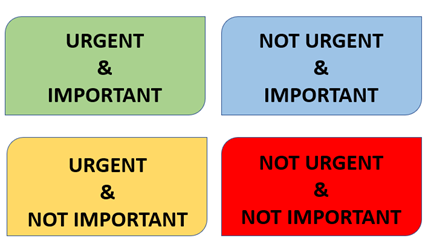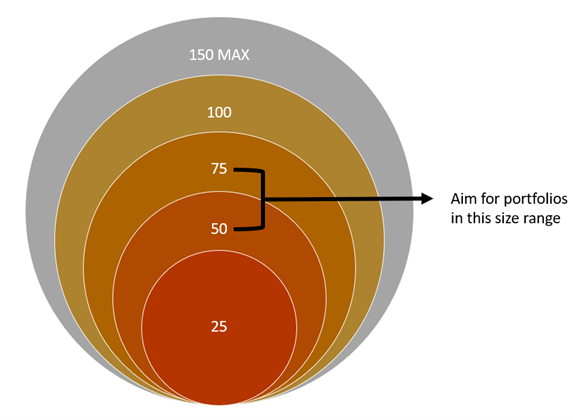We always want to create the best portfolios for our front-line fundraisers, to position them for success. In our quest to create high quality portfolios, we often encounter obstacles that make it challenging or even halt our progress entirely. Three of the most common obstacles can be overcome, with a bit of planning, strategy, and tenacity.
Obstacle: Short Staffed
Many nonprofits have been impacted by the Great Resignation, while others were already short staffed long before that happened. Not having enough staff leads a cascading waterfall of obstacles due to an overabundance of work to be done and not enough time in the workday to get it all done with a reduced staff. When this occurs, we need to schedule time to assess all the tasks and projects that need to be done (and their looming deadlines) and decide how to prioritize them. Implementing Steven Covey’s 4 Quadrants Time Management Strategy is a great method for prioritizing tasks and projects. As we do so, we must acknowledge the hard reality is that some tasks or projects will need to be abandoned, or at the very least they need to be deprioritized until more staffing is available. As tasks and project are reprioritized, making portfolio management a higher priority will help in positioning those portfolios for success
Obstacle: Too Many Prospects
Traditionally it was believed the portfolios should be large to give the fundraiser a variety of prospects to work with to secure the most gifts. This approach may have made sense in a time where prospect management was not yet an industry norm and there was little if any work being done in fundraising data analytics. Luckily, the times have changed! Most mid-sized to large fundraising shops have prospect management and possibly even data analytic staff. Continuing to keep portfolio sizes large does a fundraising shop far more harm than good. There is no strategy to this tactic, and it ultimately sets the fundraiser up to fail in one way or another. Quality is more important than quantity these days. The focus needs to be on putting high quality prospects into portfolios. If a shop has an abundance of high-quality prospects, this makes a case for hiring more front-line fundraisers – which is preferable to overburdening the current fundraisers. Aim for portfolio sizes to be in the 50 to 75 range. A portfolio should have an absolute maximum of 150 (and not one prospect more!), however smaller portfolios are preferable to allow your fundraisers to optimize their efforts.
Obstacle: Resistance from Leadership
Prospect research works alongside prospect management to create prospect assignments that allow a fundraiser to be highly successful. Based on the prospect research, prospect management makes recommendations to reduce a portfolio size, move prospects out of a portfolio, or add new prospects. These recommendations come with strategies that the fundraisers can use to begin cultivating the right prospects for the right level of gift to the right fundraising initiative at the right time. Despite the best efforts of prospect research and prospect management staff to position a portfolio for success, it is not unusual to encounter resistance from leadership.
Leadership may not be on board with prospect management being the strategic and tactical advisor to the fundraiser. Leadership may see this as a shift in power or responsibilities – rather than valuing it for the strong collaborative partnership that it is. Getting buy-in from leadership takes time as well as some tenacity on the part of the prospect management staff to educate leadership on the benefits of this partnership. Resistance and lack of initial buy-in from leadership should not derail effort to implement this prospect management model, as it is used by other nonprofits (and used well) who are vying for the same donor funding. It is to the detriment of the organization if leadership does not get on board with this – quickly.
Leadership may not be on board with prospect management being the strategic and tactical advisor to the fundraiser. Leadership may see this as a shift in power or responsibilities – rather than valuing it for the strong collaborative partnership that it is. Getting buy-in from leadership takes time as well as some tenacity on the part of the prospect management staff to educate leadership on the benefits of this partnership. Resistance and lack of initial buy-in from leadership should not derail effort to implement this prospect management model, as it is used by other nonprofits (and used well) who are vying for the same donor funding. It is to the detriment of the organization if leadership does not get on board with this – quickly.
In Summary
As we work to position portfolios for success, we will encounter obstacles. How we respond to these obstacle factors heavily into whether our portfolios and fundraisers can become more successful. Obstacles are merely challenges that we encounter as we work, and that we need to create a work around or solution for. The key is to be strategic in your approach to overcome these obstacles and to be tenacious in your determination to position your fundraisers for success.


